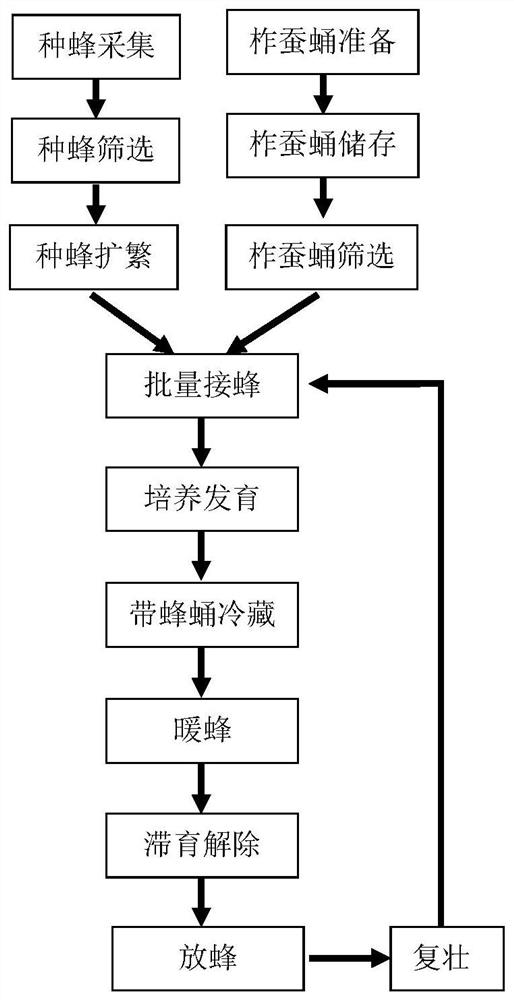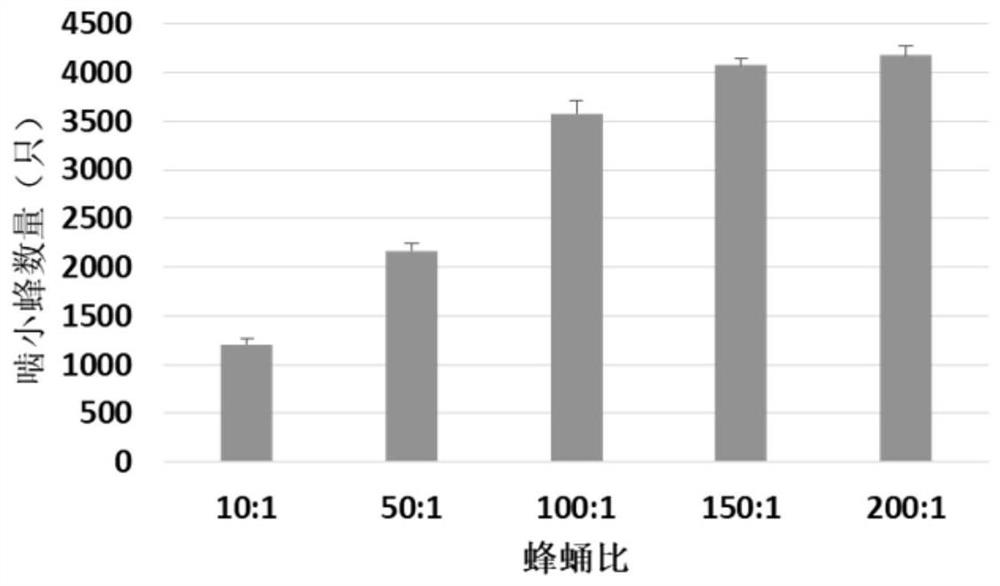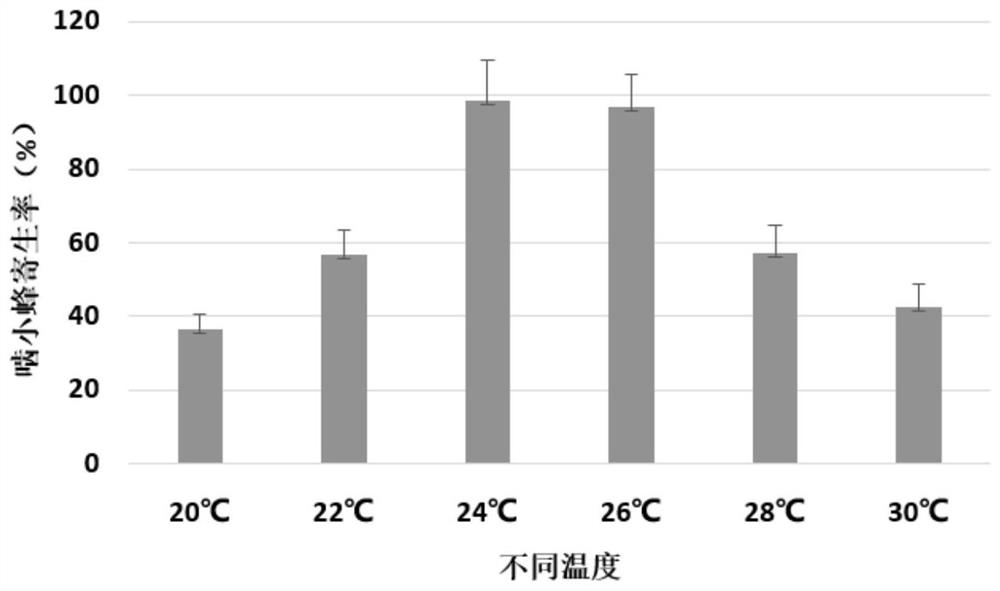A kind of artificial breeding method of tea garden gnat wasp
A technology of artificial breeding and biting bees, which is applied in animal husbandry and other fields, can solve the problems of high cost, low bee emergence rate, and low efficiency of biting bees, so as to improve the bee emergence rate, low breeding cost, and good artificial breeding efficiency Effect
- Summary
- Abstract
- Description
- Claims
- Application Information
AI Technical Summary
Problems solved by technology
Method used
Image
Examples
Embodiment 1
[0037] A kind of artificial breeding method of tea garden gnat wasp, flow process is as follows figure 1 shown, including the following steps:
[0038] A1, collection of bee species: collect tea garden tea geometrid, gray tea geometrid, tea caterpillar and other lepidoptera pest pupae, carry out indoor rearing, after the gnat bee emerges, select the gnat bee with strong body and strong activity ability among them as the first generation of bees;
[0039] A2. Propagation of bee species: use tussah silkworm chrysalis with clear and transparent cranial top plate, compact and non-shrinking pupal abdomen, and tough and shiny pupa skin as an alternative host. After cleaning and disinfecting with 75% alcohol and drying it, place it in the numerous beehive, insert the first-generation kind of bees obtained in step A1 into the numerous beehive according to the ratio of bee pupa to 200:1, and put 10% Cotton balls with honey water to supplement nutrition for the adult gnat wasps;
[0...
Embodiment 2- Embodiment 5
[0051] Compared with Example 1, Embodiment 2-Example 5 differs only in that the bee-pupa ratio in Table 1 is used for the artificial propagation of gnats.
[0052] Table 1:
[0053] Example Example 1 Example 2 Example 3 Example 4 Example 5 Ratio of bee pupae in bee species expansion in A2 200 / 1 10 / 1 50 / 1 100 / 1 150 / 1 Ratio of receiving bees and pupae in batches in A4 200 / 1 10 / 1 50 / 1 100 / 1 150 / 1
[0054] The test result that final embodiment 1-embodiment 5 obtains is as figure 2 As shown, when the bee-to-pupa ratio is 200:1, the number of gnats is the largest, but within the range of 100:1-200:1, the difference in the number of bees is not very big.
Embodiment 6- Embodiment 10
[0056] Compared with Example 1, Example 6-Example 10 is only different in that the cultivation temperature in Table 2 is used for the artificial propagation of gnats.
[0057] Table 2:
[0058]
[0059] The test result that final embodiment 1, embodiment 6-embodiment 10 obtains is as image 3 As shown, when the second-generation culture temperature and the A5 step culture temperature are in the range of 24-26°C, the parasitism rate of the wasp is higher, and the parasitism rate of the wasp is the highest at 24°C.
PUM
 Login to View More
Login to View More Abstract
Description
Claims
Application Information
 Login to View More
Login to View More - R&D
- Intellectual Property
- Life Sciences
- Materials
- Tech Scout
- Unparalleled Data Quality
- Higher Quality Content
- 60% Fewer Hallucinations
Browse by: Latest US Patents, China's latest patents, Technical Efficacy Thesaurus, Application Domain, Technology Topic, Popular Technical Reports.
© 2025 PatSnap. All rights reserved.Legal|Privacy policy|Modern Slavery Act Transparency Statement|Sitemap|About US| Contact US: help@patsnap.com



